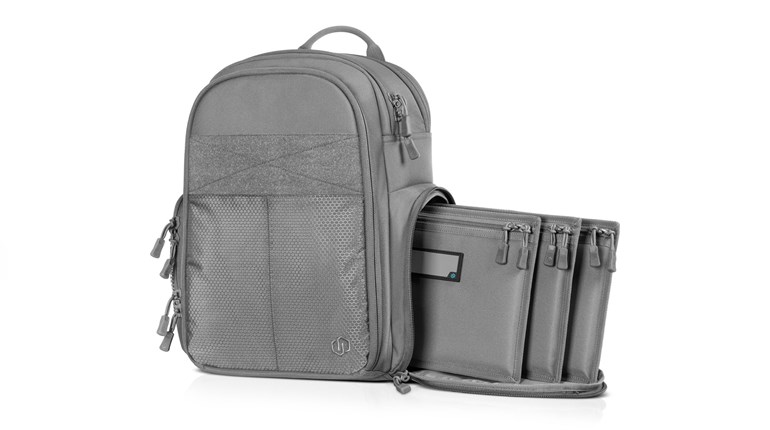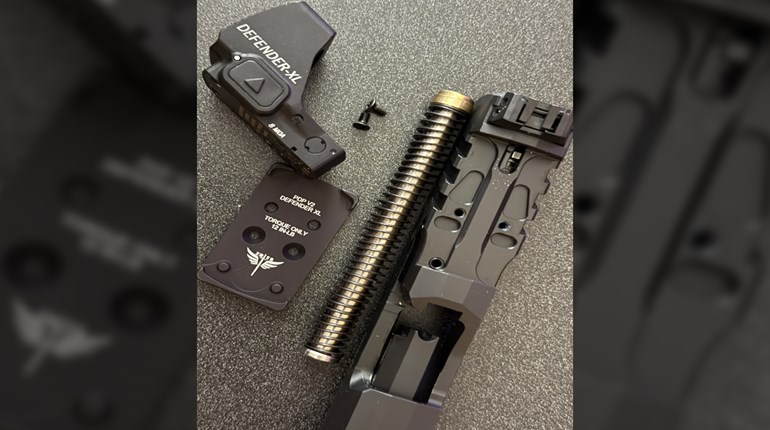
The AR-15 holds the distinction of being one of the most popular rifles in America. Adopted to replace the M14, the AR-15's military cousin, the M16, was hindered by reliability problems early on that almost ended its service. Design changes ensued and by war's end, the M16 had become a trusted part of America's arsenal. Many readers are familiar with the AR-15 and its development, but it may surprise some to know that the AR-15 is actually based on an older design called the AR-10.
Following WWII, America and her allies worked to standardize military equipment. The goal was to simplify supply chains and improve logistics in case of another global conflict. Several rifle cartridges were evaluated, but U.S. Army Ordnance insisted that anything adopted be nearly identical in performance to the .30-06 Springfield and developed the T65 cartridge. The T65 would go on to become the .308 Win. on the commercial market and the 7.62X51 mm or 7.62 NATO in military circles. Eventually, the allied countries accepted America's 7.62 with the belief that the FN FAL would become the common rifle. Things were progressing nicely until, at the last minute, the U.S. decided to adopt the M14, really nothing more than an updated version of the WWII M1 Garand.

Meanwhile, the AR-10 was developed by Eugene Stoner as he worked for Armalite. It was built as a competitor to the M14, but it performed poorly in early trials. Undaunted, Stoner and Armalite continued to refine the design and licensed its manufacture to Artillerie-Inrichtingen in the Netherlands. Artillerie-Inrichtingen did enjoy some sales successes with the AR-10, but by the time it was fully developed into a dependable and reliable rifle, most Western countries had already adopted the Belgian FN FAL. As a result, few AR-10s were made, and it became nothing more than an interesting footnote in history.
Some original AR-10 parts kits have surfaced over the years, and a handful of companies have manufactured lower receivers and assembled these kits into semi-automatic rifles. Even so, the number of original parts sets and aftermarket receivers is very few. Guns built from original parts are hard to come by and extremely expensive when available. Furthermore, many of these rifles are assembled from well-used kits, and spare parts are nonexistent. Fortunately, Brownells is changing some of that with a rifle called the BRN-10A.

The AR-10 went through evolutionary and developmental changes, even though it had a very short lifespan. Some of the earliest guns produced were for the Cuban government before Castro took over. The Cuban model, as this AR-10 is known, is the firearm Brownells chose to closely duplicate as the BRN-10A. Like the original Cuban rifle, the BRN-10A is chambered in .308 Win. and features a 20-inch barrel. The rifle feeds from a 20-round, detachable, box magazine. Semi-automatic function is provided via a gas tube located over the barrel that siphons propellant gases into the bolt carrier. The BRN-10A is loaded and unloaded via a trigger-shaped charging handle inside the upper receiver's carrying handle. This charging handle was standard on most AR-10s produced.
Despite a tremendous amount of attention to detail, there are a few items that Brownells seems to have overlooked. The bolt catch more closely mimics the style used on later rifles. The stock's sling swivel is not a true copy, and the method of retaining the handguard to the barrel is not what was used originally. Furniture, while close in style and color, is not exact and is fabricated from plastic rather than the original Bakelite-type material. All things considered, these are extremely minor points. Brownells has gone to great efforts to build a rifle with the overall appearance of an original Armalite.

Internally, the BRN-10A is built using modern DPMS LR308-pattern components, so obtaining new spare parts or changing to something like a two-stage match trigger should be of no consequence. One comment on magazines; the BRN-10A magazine well is machined to follow the original Armalite pattern. Any metal magazine made for the DPMS rifles should fit and function, but magazines like the Magpul PMag will not fit without modification. Brownells is selling reproduction metal magazines that include the distinctive waffle pattern found on original Armalite mags.
In use, the BRN-10A proved to be a fun and reliable firearm with a couple caveats. Ammunition used for reliability testing included Federal Premium XM80C and Malaysian L2A2 FMJ. Both brands cycled fine, but the surplus Malaysian ammo is known to have hard primers. Not all rounds fired on the first hammer fall. Accuracy testing was conducted using FMJ military ammo made by Saltech in Switzerland as well as Prvi Partizan/PPU 168-grain BTHP Match and traditional hunting ammo in the form of Winchester 180-grain Power-Point. The BRN-10A preferred ball or BTHP ammo. It was not 100 percent reliable with the soft-pointed Winchester.

As with the original, the Brownells copy is equipped with iron sights. The rear sight uses one aperture and is adjustable for both elevation and windage. The front sight is fixed in place and is machined directly into the front sight base. There is no provision for mounting a red-dot or magnified optic. Most of the operating controls are familiar and comfortable, and anyone used to handling and shooting an AR-15 should feel right at home with the BRN-10A. It is interesting to note how little the ergonomics of these rifles has changed after nearly 60 years of use.
One exception to the above is the unfamiliar charging handle. The "upside-down" trigger inside the carrying handle certainly looks correct and would seem practical, but that may not be the case. The handle latches into the upper receiver via a very stiff spring. Overcoming spring tension to load and unload the rifle was quite difficult. Furthermore, there is little room inside the handle to obtain a good grip for clearing malfunctions that may occur. After running some standard AR-15 malfunction-clearance drills, it became apparent why the charging-handle design was replaced by the now familiar T-handle.

It's surprising that Brownells chose the Cuban pattern for its entry into the AR-10 market. While the Cuban model is one of the rarest Armalite variants, the more widely known pattern is called the Portuguese model. The Portuguese model enjoyed the most sales success and had many features not found on the Cuban gun, such as a bayonet lug and a user-adjustable gas setting. The Portuguese version used a synthetic fore-end over a ventilated metal liner. This fore-end gave the Portuguese rifle its most distinctive characteristic. The Portuguese model was the one most used in combat and was the most refined version of the AR-10. Brownells does produce a BRN-10 variant with a B suffix that has a flash hider based on the Portuguese original. Otherwise, the B model is basically a BRN-10A with black furniture. Is a closer copy of the Portuguese rifle in the works? Let's hope so.
Where does the BRN-10A fit in the saturated AR market? It likely won't appeal to anyone wanting a .308 Win. rifle for target work, nor is it particularly well-suited for hunting. What it does do is provide the collector and military historian with an affordable copy of a rare and expensive firearm. Collectors who are fortunate enough to own a rifle assembled from early Armalite parts should also like the BRN-10A. It will allow them to shoot and enjoy a similar rifle without concern about breaking parts in their rare originals.

Modern .308-pattern ARs have enjoyed some military success as dedicated marksman rifles, which vindicates the AR-10 as a concept. This is a testament to Stoner’s work and more than validates the design as a whole. Handling and shooting the BRN-10A makes one wonder what might have happened had the AR-10 fared better in early American tests. Could the AR-10 have been that “one” rifle sought by Western forces? Would the AR-10 still be in frontline service had it been adopted over the M14 in the late 1950s? Of course, that wasn't how things played out, but it is fun to speculate.
The BRN-10A is part of a complete Retro line from Brownells. The company is selling several reproduction variants of the early Armalite and Colt rifles. In addition to the BRN-10, these reproductions include a copy of the original prototype AR-15, as well as variations of the AR-15 rifle that would have been carried late into the Vietnam War and possibly even into the 1980s or 1990s, depending on unit and branch of service.

All ammo used in accuracy testing was graciously provided by SG Ammo in Stillwater, OK. SG Ammo sells both new and surplus military ammo and usually has a good selection of the two.
Brownells BRN-10A Specifications
Action: Gas operated semi-automatic
Caliber: .308 Win.
Receivers: 7075-T6 aluminum. Machined from billet
Barrel: 20-inch 1:10-inch twist; nitride-treated
Weight: 8 pounds, 9 ounces
Length: 40.5 inches



































